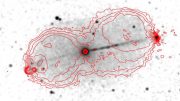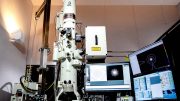
Corals collected on islands in the central Pacific reveal that the strength and frequency of the climate phenomenon commonly known as El Niño is highly unpredictable. Credit: Gary Meek/Georgia Tech
El Niño events are not as predictable as previously thought. According to new analyses of climate records locked within ancient corals, the frequency and strength of the ocean-warming phenomenon were more variable during the last century than, on average, during the past 7,000 years.
The scientists published their findings in the journal Science¹. The finding discounts the idea that long-term variations in the Earth’s orbit influence the climate. El Niños are marked with substantially warmer than normal sea surface temperature, which is seen along the equatorial Pacific. These events, coupled with La Niñas, which are defined by cooler-than-average sea surface temperatures in the same region, steer weather patterns across large parts of the globe. These phenomena are called the El Niño-Southern Oscillation (ENSO) and in modern times, El Niños occur once every 2 to 7 years in varying strength and length.
Scientists often estimate the strength and frequency of ENSO events by turning to lake sediments. The layers of sediments provide insight into precipitation. But some of the best climate records are locked in corals because the ratios of oxygen isotopes incorporated into their calcium carbonate skeletons can help scientists decipher past trends in precipitation and temperature on a month-by-month basis.
Kim Cobb and her colleagues looked at long-term variations in the ratio of oxygen-18 and oxygen-16 isotopes locked in the corals on Christmas Island and Fanning Island. In that region, El Niño causes warmer sea surface temperatures and increased precipitation, which results in lower concentrations of oxygen-18 in coral carbonates.
Radioactive dating was used to estimate when each of the samples were alive and growing. They were sliced, and tiny samples were taken, spread 1 millimeter apart. The chemical analysis revealed the climate change in the area, going back 7,000 years. This triples the amount of climate data available previously from corals.
Long-term variations in ENSO magnitude and frequency during the 20th century were on average much larger than at any time in the last 7,000 years. It’s not clear why the 20th century variability in ENSO is so much higher than in previous centuries, states Cobb. It could be related to the amount of carbon dioxide in the atmosphere, but there isn’t enough data available to conclude this.
Previous studies indicated that ENSO variability was affected by the amount of sunlight striking the Northern Hemisphere in summer, but the new results seem to indicate that this isn’t the case. The analysis indicates that if such changes play a role, it’s a minor one. ENSO was weaker during the mid-Holocene, 6,000 years ago.
Reference: “Highly Variable El Niño–Southern Oscillation Throughout the Holocene” by Kim M. Cobb, Niko Westphal, Hussein R. Sayani, Jordan T. Watson, Emanuele Di Lorenzo, H. Cheng, R. L. Edwards and Christopher D. Charles, 4 January 2013, Science.
DOI: 10.1126/science.1228246









Be the first to comment on "The Inherent Unpredictability of El Nino Events"